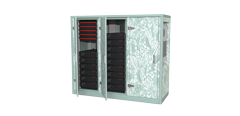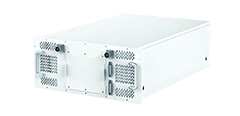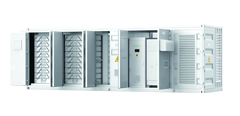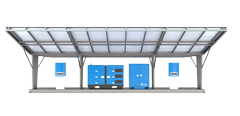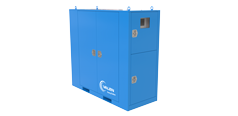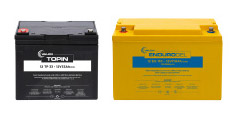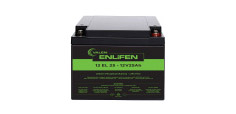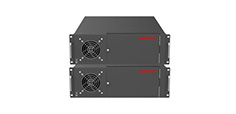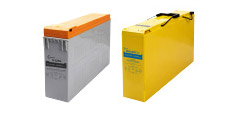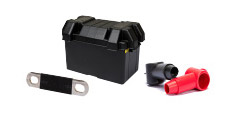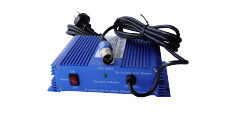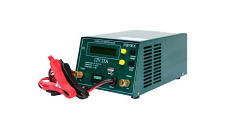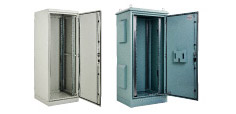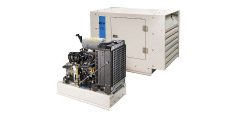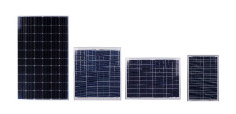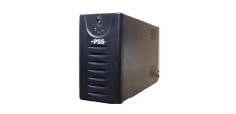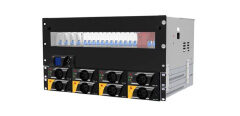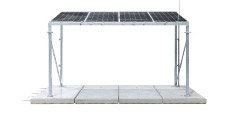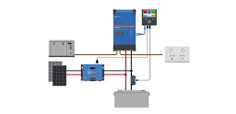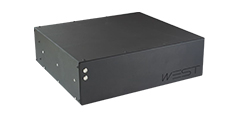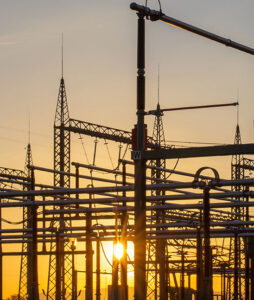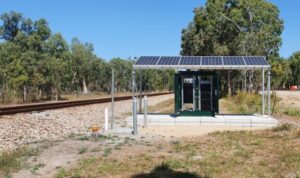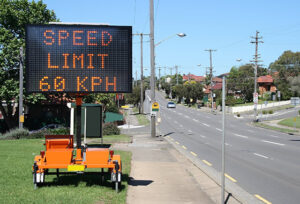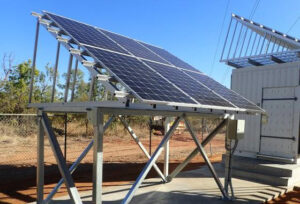
FAQs Batteries
There are many different ‘types’ of which Lead Acid and Lithium are popular. ‘Lead Acid’ and ‘Lithium’ refers to the technology of the battery. We consider three different categories of Lead Acid batteries – Flooded/Wet Cell, VRLA and OPzV. Flooded/Wet Cell batteries are commonly used in cars, automotive vehicles and older stand-alone systems. The acid is liquid form and can be seen as ‘flooding’ over the plates inside a battery, hence the name. VRLA (Valve Regulated Lead Acid) batteries get their name because they are supposedly ‘sealed’. But this is not entirely true as the battery has valves. Internally, the acid is immobilised, and gases that form are recombined. If an excess of pressure arises, this bleeds off through the valve. VRLA batteries come in two main types – AGM and Gel. AGM (Absorbent Glass Mat) related to the type of separator between the lead plates. The acid is immobilised in this separator which separates the positive and negative plates. A well-constructed VRLA Gel uses polyethylene separators, but the electrolyte between the plates is a gel consistency.
Valen Topin AGM batteries are your typical Absorbent Glass Mat (AGM) separator batteries. Valen X-CEL batteries are a higher specified AGM battery with pure lead plates that incorporate 1.6% tin in the lead. The addition of tin into the plates markedly reduces sulphation and delamination, which occurs as a result of the regular use of the battery. Valen Gel batteries incorporate a polyethylene separator and a thixotropic gel which results in superior performance in cyclic and higher temperature applications. Valen ENDUROGEL batteries are a premium gel battery with pure lead plates that incorporate 1.6% tin in the lead and also features the Catalyst Life Extender. The Catalyst improves the efficiency of the gas recombination resulting in a lower loss of gases and, in doing, so has a significant benefit on the life and performance of the battery. Valen ENDUROGEL is the battery of choice for heavy cyclic applications. The Catalyst also reduces the damaging effects of higher temperatures.
The term ‘deep cycle’ generally refers to a range of batteries capable of releasing charge over a long time. Over-against a starter battery, used for starting a motor, where the charge is taken out of the battery for a few seconds, and then the battery is immediately recharged. In an application where the battery will be discharged and recharged, such as a mobility scooter, it is imperative to use a ‘deep cycle’ battery technology such as Gel or Lithium. What is the definition of ‘cycle use’ and ‘standby use’? ‘Cycle use’ refers to cyclic applications where the battery is heavily drawn on to power the device, often in the absence of another external power source. At a later stage, the battery is then recharged. Typical examples are solar energy storage systems and mobility scooters. In a solar system, after the sun sets on a cloudy day, the battery will power the device until the sunshine starts recharging it. Absence of charging the battery, referred to as solar drought, can place severe stress on a battery. ‘Standby use’ refers to standby applications where the battery is on constant mains powered charge, e.g. most security and fire alarms.
Depending on the application and battery type, different battery testing units are available, and a program of regular testing is recommended to ensure and evaluate the health and State of Charge (SOC) of the battery. Absence of regular maintenance may mean there is not enough capacity to maintain a critical operating during an emergency. Quick indication: an intelligent battery tester, such as the IBT 612, is suitable for a quick test. A small unit that gives an indication of capacity and voltage and is recommended for smaller UPS and telemetry batteries. Cyclic load: for more comprehensive testing, load testing of a battery is the recognised way of obtaining a realistic assessment of the residual capacity in a battery. Battery capacity analysers, such as the BACA and CCOLT units, are reliable instruments for this application. A high degree of accuracy is achieved but it requires the batteries to be fully charged; then the unit applied, which discharges the battery during testing. Impedance: an impedance meter, such as the RE856, allows a quick live circuit test but requires the baseline impedance measurement before the readings may be of any use. Impedance testing is recommended for more massive UPS and solar systems where interruption of the power supply is an inconvenience. The readings obtained suggests the health of the battery but gives no indication of residual capacity.
This equation is mostly used for UPS applications and is: W = I x V. For example, a 12V9Ah battery would equal 108Wh (12 x 9 = 108Wh). Does a deep cycle battery have a memory? No, VRLA deep cycle batteries do not have a memory. One of the significant drawbacks of the older battery technologies, such as NiCad’s, was that they had a memory and were unable to discharge past the ‘remembered’ previous discharges. For example, a rechargeable razor: because a user would typically use 15% when shaving and then put the razor on charge until the next time, eventually the battery only had 15% capacity. VRLA batteries do not display this feature. On the contrary, smaller low depth discharges and regular charging will result in the most prolonged usable life with VRLA batteries.
Batteries are generally rated on two factors: C-rating is the capacity the battery can deliver over a set amount of hours: Smaller VRLA batteries are generally rated C20 (20-hours) Larger VRLA batteries are generally rated C10 (10-hours) Solar batteries are generally rated at C100 (100-hours) The second factor is the cut-off voltage which is the voltage that the battery is discharged to.
For example, 12V7Ah C20 12V = the voltage 7Ah = indication of capacity. Ah needs to be read along with the ‘C20’ next to it, which means that if the battery was discharged at 350mA or 0.35A over 20 hours, your battery would still be viable at the end of this period. It is essential when working with VRLA batteries that the 7Ah does not mean you can drain 7 Amps for one-hour. The one-hour rate is 3.6 Amps.
The C-rating is the way the batteries capacity is displayed, i.e. 100Ah/C10. The C-rating tells you the amount of current you can discharge from the battery over a specific time (measured in hours). The shorter the time, the smaller the C-rating will be. Hence why a battery rated at C100 has a larger capacity than a battery at C10. For example, 2 EG 1000 = 2V1000Ah/C10 or a 2V1200Ah/C100 At 10-hours, this battery discharges 1000Ah, but over 100 hours, this battery discharges 1200Ah. The reason behind this is that the battery chemicals can react better at a slower discharge which results in more capacity being extracted from the battery.
Many factors determine the life of a VRLA battery, but the most prevalent ones are: Sulphation: probably the worst killer; this is the result of either excessive deep discharges and poor charging practices, in an AGM battery this is irreversible. Battery dryout: caused by high temperatures and excessive cycling. The battery loses its moisture through the valves, and this moisture cannot be replaced. Battery self-discharge: if a VRLA battery is inactive and is left over six months without being charged, it will start losing its capacity. Depth of Discharge (DOD): the deeper the battery is discharged, the shorter the usable batteries life will be.
Yes, overcharging does damage batteries – common causes of overcharging a battery are: The charger is too large for the battery, so it is delivering more current to the battery than it can handle, You have a faulty charger, or There is a faulty battery in a series of batteries or cells. Overcharging a battery will accelerate sulphation and battery dryout, which consequently shortens the life of the battery.
Yes, over-discharging does damage batteries. In the VRLA 12V7Ah example above, we have drawn 7Ah over 20 hours, at the end of this discharge, the battery is not at zero volts but will typically be around 9.5 to 10 volts. Discharging below this voltage is over-discharging and is damaging the battery. The common cause of over-discharging a battery is the system is drawing more power than what the battery is capable of delivering. In other words, the battery was under-specified. Over-discharging a battery will lead to deeper cycles which accelerates the demise of the battery.
The first question – how critical is the application? Sometimes lack of power is life-threatening, and then the battery size needs to be oversized somewhat. Secondly, what is the current drain? How often will this amount of energy be removed from the battery and then how quickly would you need this energy replaced? As we mentioned above, the battery must be sized correctly. If 100% of the capacity of an AGM battery is extracted with each cycle, inly 300 cycles may be expected of a typical AGM VRLA battery. In contrast, the same battery is capable of delivering 30% of its capacity for 800 cycles.
The power that comes from a grid power station and is available at your household powerpoint is called alternating current (AC). Batteries and solar panels produce direct current (DC). In a typical household system of solar panels and batteries, your solar array will produce DC power. DC power is then converted to AC by the solar inverter, to make it compatible with the AC mains power coming into your house from the grid. A battery system also uses DC. The batteries are usually connected to the AC mains power in a similar way to what’s used for the solar panels. Thus, an inverter converts DC power from the batteries to AC power. The system is then suitable for connection to the grid and allows the batteries to charge and discharge depending on your household usage.
The F1 and F2 are the terminals for the battery. F2 are wider than the F1 batteries. Terminal adaptors are available if you need to change the size of the terminals.
No, we do not recommend using Valen batteries in cars or bikes. As the terminals you will need are different to the ones on our batteries. These batteries would be wet cell batteries, Valen does not supply wet cell batteries.
The serial numbers on batteries are engraved on the top of the batteries.
The recommended battery would be a gel if the customer is a heavy user of a mobility scooter. Gel batteries are designed to supply power slowly for longer periods of time. Gel batteries also have a higher cycle life than our AGM batteries. We do recommend gel batteries for mobility scooters because they recover from deep discharges.
The recommended shelf life of a battery is six (6) months, we do recommend that you regularly charge the batteries if you are keeping them in storage for longer periods of time. Before you install the battery make sure to give the battery a proper charge to ensure that it performs properly.
Battery Chargers
Use the formula: Battery Ah/(hours to charge/2) For example, a 100Ah battery, 8 hours to charge is 100/4 = 25A charger.
Solar
Grid-connected solar systems use the term kilowatt (kW) to define the output power of a unit.
Kilowatt (kW) = Volts (V) x Amps (A)
For example, a 3kW photovoltaic (PV) solar system would have an output of 12.5A at 240VAC.
kWh refers to the amount of continuous power output you get from a battery storage bank.
Kilowatt hour (kWh) = Volts (V) x Ampere hour (Ah)
For example, a 24V500Ah = 12kWh (120,000kWh’s)

